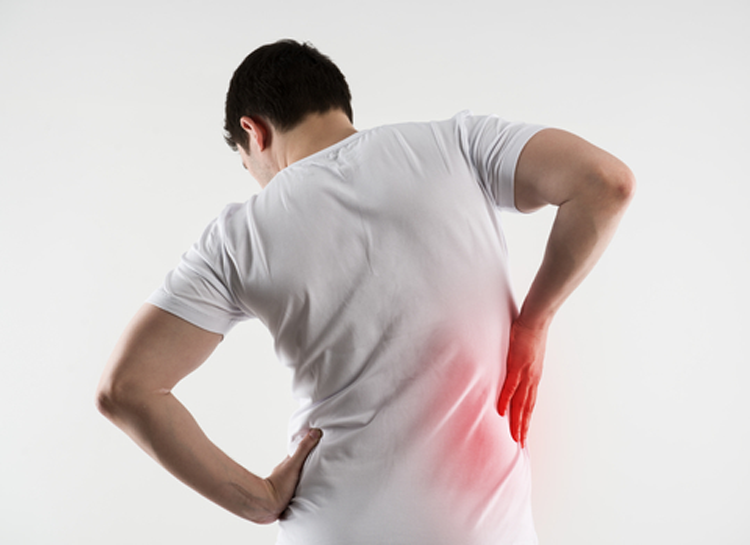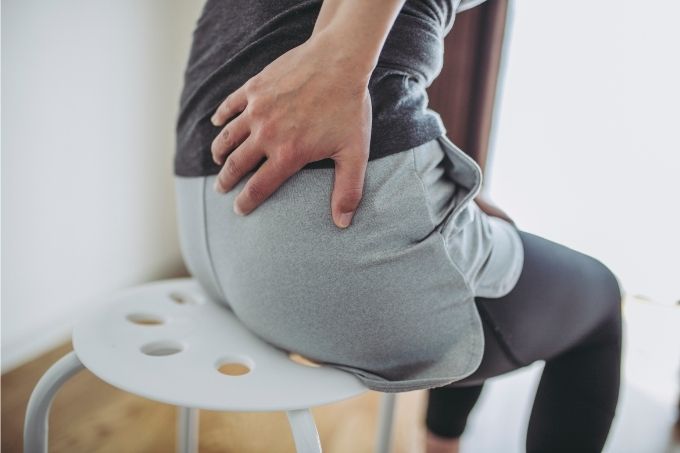The area above the buttocks, known as the lower back, is one of the most crucial parts of the human body. It plays a significant role in providing support, stability, and mobility to the spine and the entire body. This article aims to provide an overview of the lower back, its anatomy, functions, common issues, and ways to maintain its health.
The lower back, also referred to as the lumbar region, consists of five vertebrae, labeled L1 to L5. These vertebrae are larger and stronger compared to those in other parts of the spine. They are responsible for bearin
g the majority of the body’s weight, allowing us to stand, walk, and engage in daily activities.
The main functions of the lower back include supporting the upper body, protecting the spinal cord, and enabling essential movements, such as bending, twisting, and lifting. The intricate structure of the lower back comprises various components, including muscles, ligaments, tendons, and intervertebral discs, which work together to ensure stability and flexibility.
However, the lower back is susceptible to a range of issues. Some common problems include muscle strains, herniated discs, spinal stenosis, and degenerative conditions like osteoarthritis. These conditions can cause pain, stiffness, limited mobility, and even radiating pain into the legs.
Fortunately, there are several ways to maintain the health of the lower back. Regular exercise, focusing on strengthening the core muscles and maintaining flexibility, is vital. Engaging in activities like yoga, pilates, or swimming can help improve posture and alleviate stress on the lower back. Additionally, practicing proper body mechanics during daily tasks, such as lifting objects with the legs instead of the back, can significantly prevent strains and injuries.
If lower back pain persists or becomes severe, seeking medical attention is crucial. A healthcare professional can provide a proper diagnosis and recommend appropriate treatment options, such as physical therapy, medications, or, in severe cases, surgery.
In conclusion, the area above the buttocks, known as the lower back, plays a significant role in providing support and mobility to the spine and the entire body. Understanding the anatomy, functions, common issues, and ways to maintain its health are essential for ensuring a pain-free and active lifestyle. By implementing preventive measures and seeking professional help when needed, individuals can maintain a healthy lower back and optimize their overall well-being.
What does it mean when your lower back hurts on the right side?
Possible causes of lower back pain on the right side include sprains and strains, kidney stones, infections, and conditions that affect the intestines or reproductive organs. People should consult a doctor if they experience lower back pain that does not improve with rest or affects their daily life.

What causes lower back pain just above the buttocks right side?
Possible causes of lower back pain on the right side include sprains and strains, kidney stones, infections, and conditions that affect the intestines or reproductive organs. People should consult a doctor if they experience lower back pain that does not improve with rest or affects their daily life.

When should I worry about lower right back pain?
If the pain lasts four weeks or longer. If the pain keeps getting worse as time goes by. If you are experiencing other symptoms, such as fever, major weight loss or weight gain, loss of function or weakness in extremities, bladder problems, etc.
How do you know if your lower back pain is serious?
If your back pain wakes you up in the middle of the night or appears when you’re in certain positions, such as lying down, then this could be a sign of a more serious problem. It could be a sign of a more systematic problem such as an infection, fracture, severe nerve compression or even cancer.
What causes upper right back pain in females?
Many things can cause upper and middle back pain. These include poor posture; overuse or injury of the muscles, ligaments, or discs that support the spine; a vertebra fracture; pressure on the spinal nerves from problems such as a herniated disc; and osteoarthritis.
What are red flags for upper back pain?
A troubling sign of upper back pain is when it radiates to the arms or chest in addition to the back. Referred pain is a particular kind of pain that might point to underlying problems that need to be addressed.Dec 4, 2023
What is a red flag for upper back pain?
Red flag symptoms may include: Constant back pain. Unexplained continuous fever. Swelling or other structural deformity.
When should I worry about upper right side back pain?
If you have any concerns about upper back pain, or if you have back pain from a fall, injury, or accident, consult a doctor. Also seek medical attention if you have any of the following symptoms in conjunction with upper back pain: Weakness or numbness in one or both legs. Fever without flu-like aches.
When is upper back pain an emergency?
For back problems, the red-flag symptoms and signs that may indicate an emergency typically start suddenly and include some combination of the following: Sudden loss of sensation in one or both legs, the groin and genital area, and/or the anal region. Inability to walk or stand. Inability to control bowel movements.

